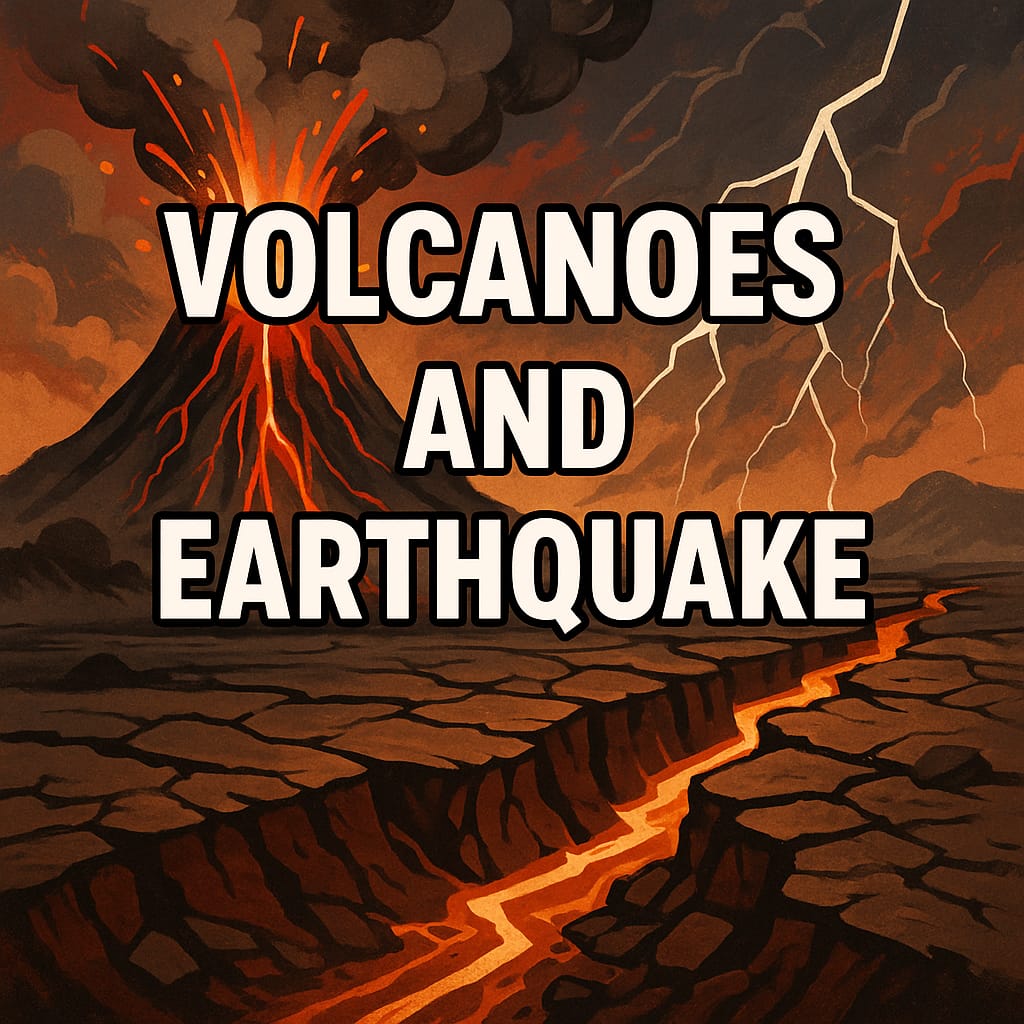Volcanoes and Earthquakes: Forces That Reshape the Earth
Volcanoes and Earthquakes: Forces That Reshape the Earth
The Earth’s surface may appear stable and unchanging, but deep beneath our feet, powerful forces are constantly at work. Two of the most dramatic expressions of these forces are volcanoes and earthquakes. While both are natural phenomena caused by movements within the Earth’s crust, they differ in form, behavior, and impact. Yet together, they play a vital role in shaping the planet’s surface.
What Causes Volcanoes and Earthquakes?
The Earth’s outer shell, called the lithosphere, is broken into massive pieces known as tectonic plates. These plates float on a layer of semi-molten rock called the asthenosphere. As the plates move—sometimes slowly, sometimes suddenly—they interact in different ways: they collide, pull apart, or slide past each other. These interactions are what cause earthquakes and volcanoes.
- Volcanoes form mostly at divergent and convergent boundaries. When magma rises, it can erupt as lava, ash, and gases.
- Earthquakes usually occur at transform boundaries, where plates grind past each other. The built-up stress is released as seismic energy.
How Volcanoes Reshape the Earth
Volcanic eruptions can dramatically alter landscapes. Over time, repeated eruptions can build volcanic mountains and islands, such as the Hawaiian Islands. Lava flows reshape the terrain, while ash deposits can enrich soils.
However, volcanoes can also cause destruction. Explosive eruptions may bury towns, trigger mudflows called lahars, and disrupt global air travel.
How Earthquakes Reshape the Earth
Earthquakes can cause sudden and violent changes. Large quakes can uplift land, sink coastlines, or create new fault lines. For example, the 2004 Indian Ocean earthquake caused the seafloor to rise, generating a deadly tsunami.
Though most earthquakes are minor, large ones can destroy buildings and trigger landslides.
Living with Geological Hazards
Many people live in high-risk zones due to natural resources, fertile soils, or coastal access. Cities like Tokyo, Naples, and San Francisco lie near active faults or volcanoes.
Modern science helps reduce the risks through:
- Seismic monitoring for early warning
- Volcano observatories tracking volcanic activity
- Earthquake-resistant buildings
- Emergency preparedness plans
Conclusion
Volcanoes and earthquakes are powerful reminders that the Earth is a dynamic planet. Though they bring destruction, they also create new landforms and contribute to Earth’s transformation. Understanding these forces helps us prepare for their effects—and appreciate the ever-changing nature of our world.
